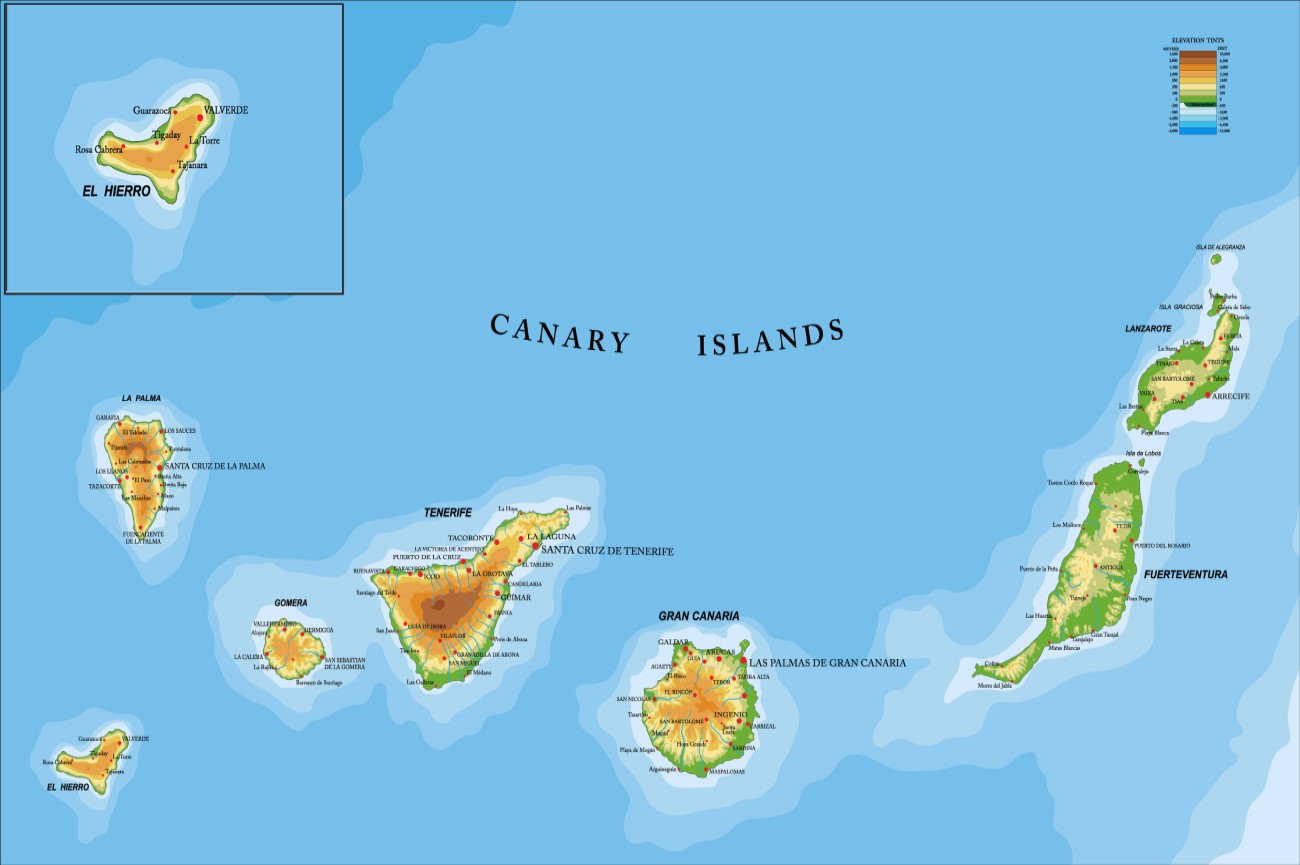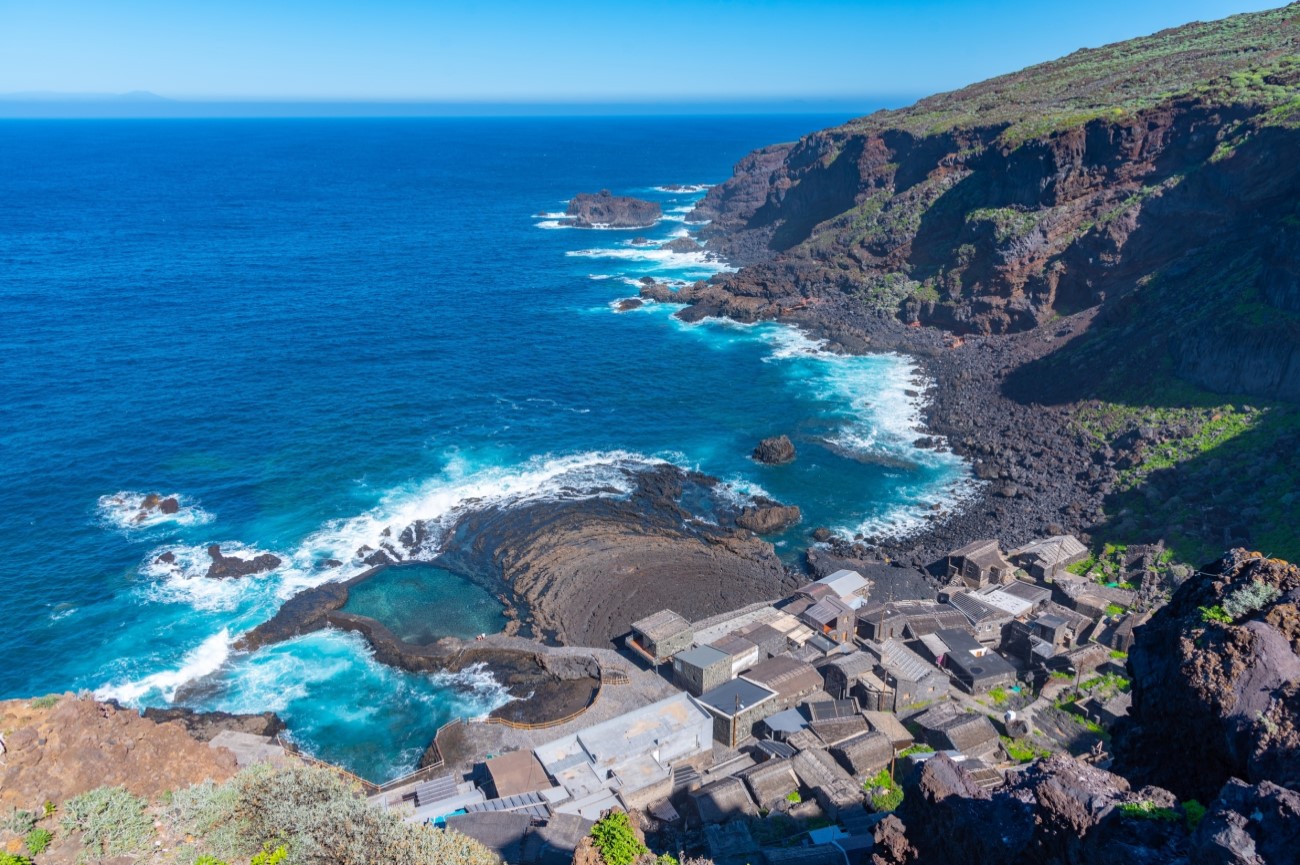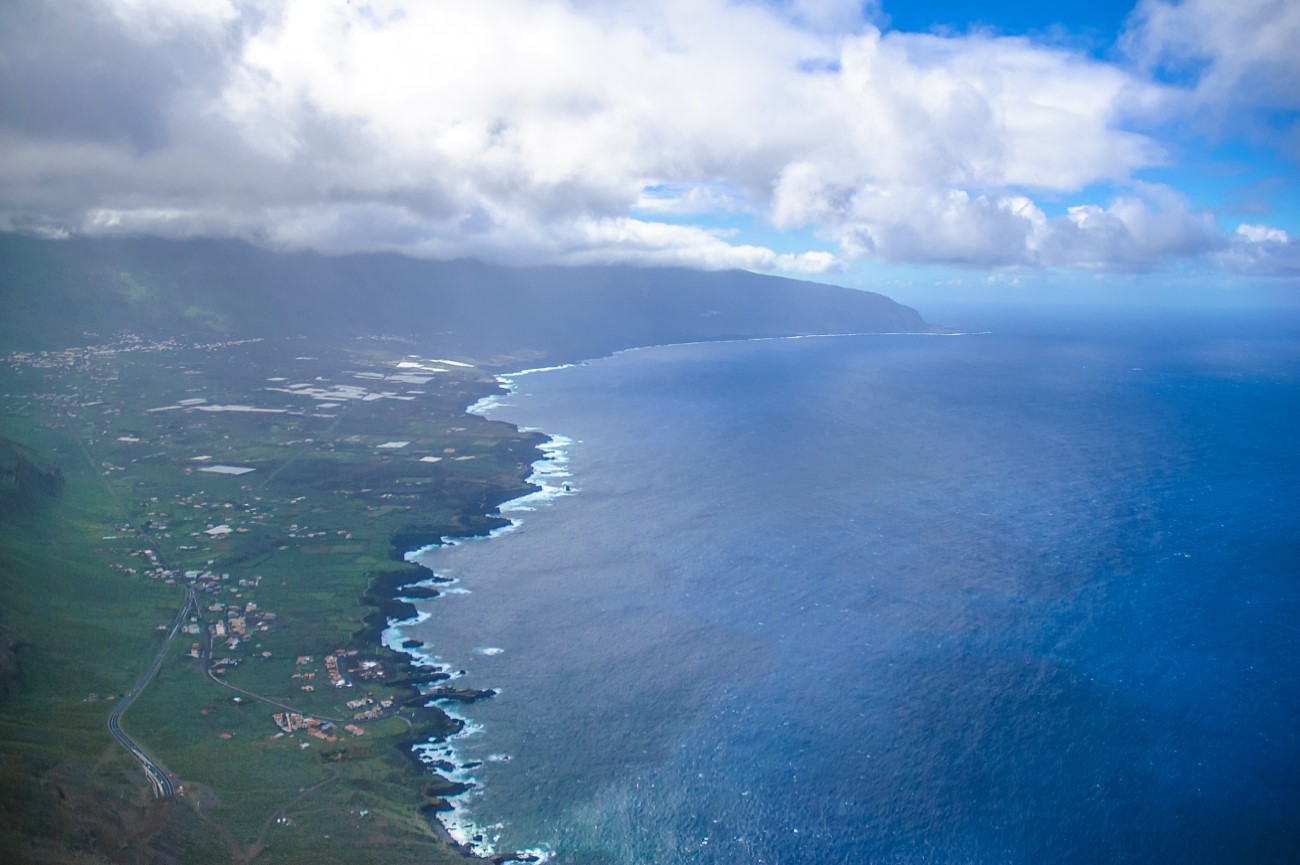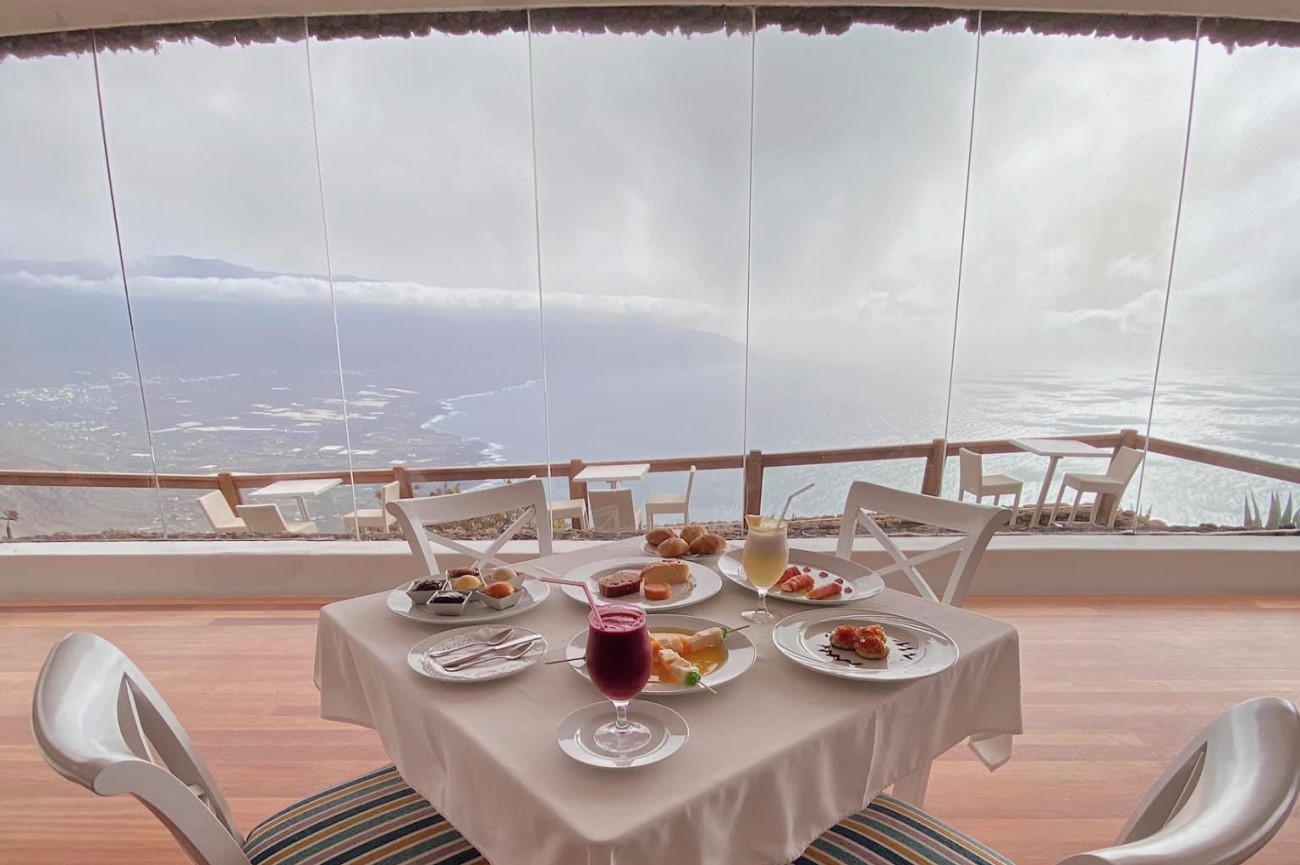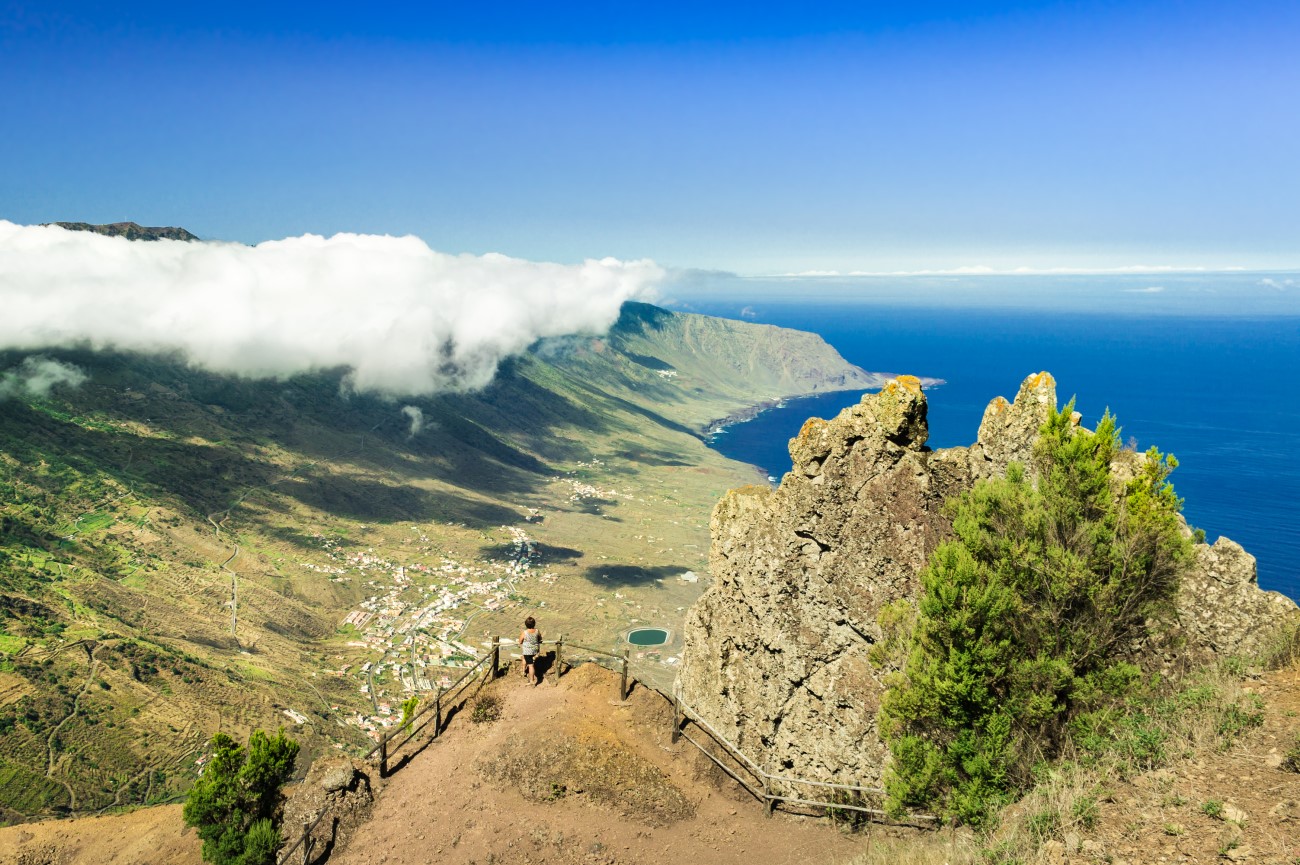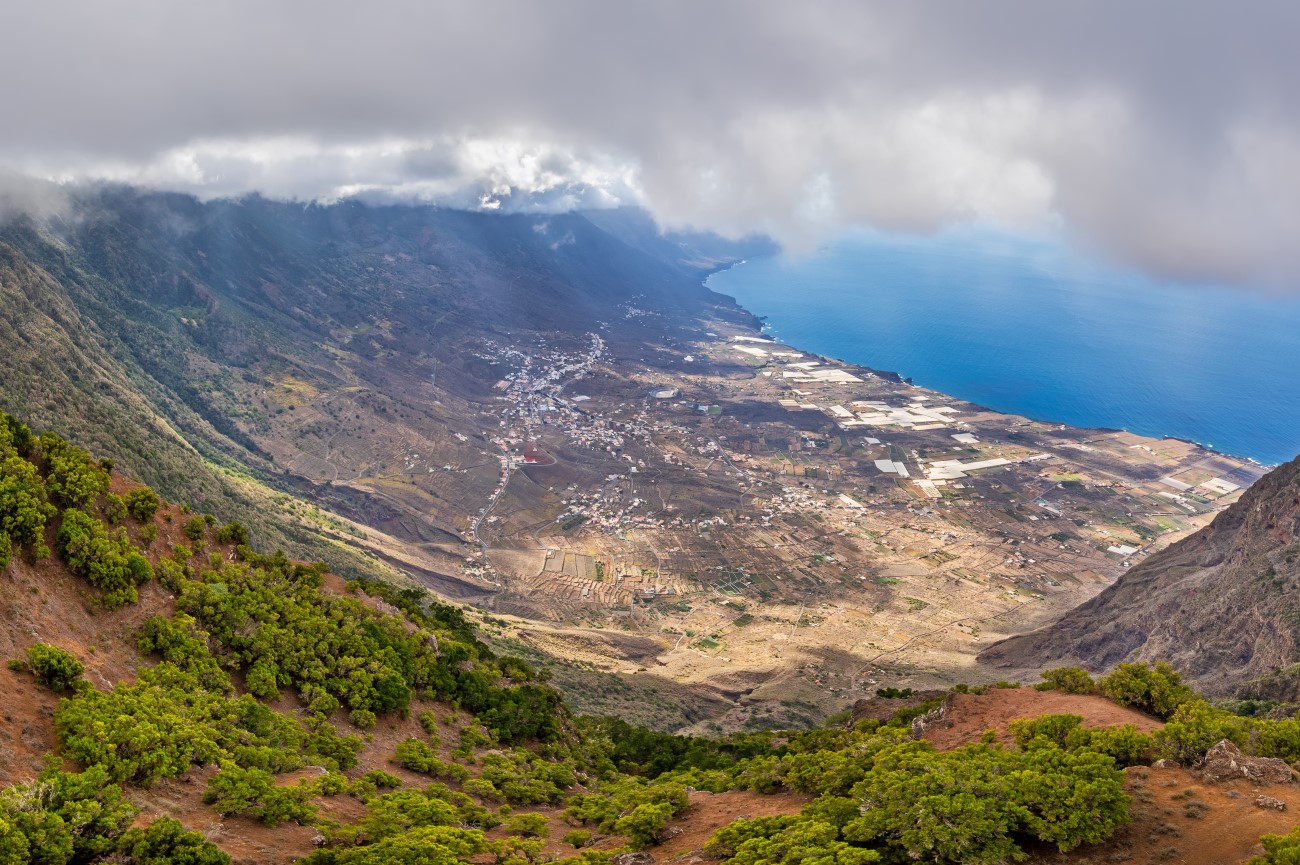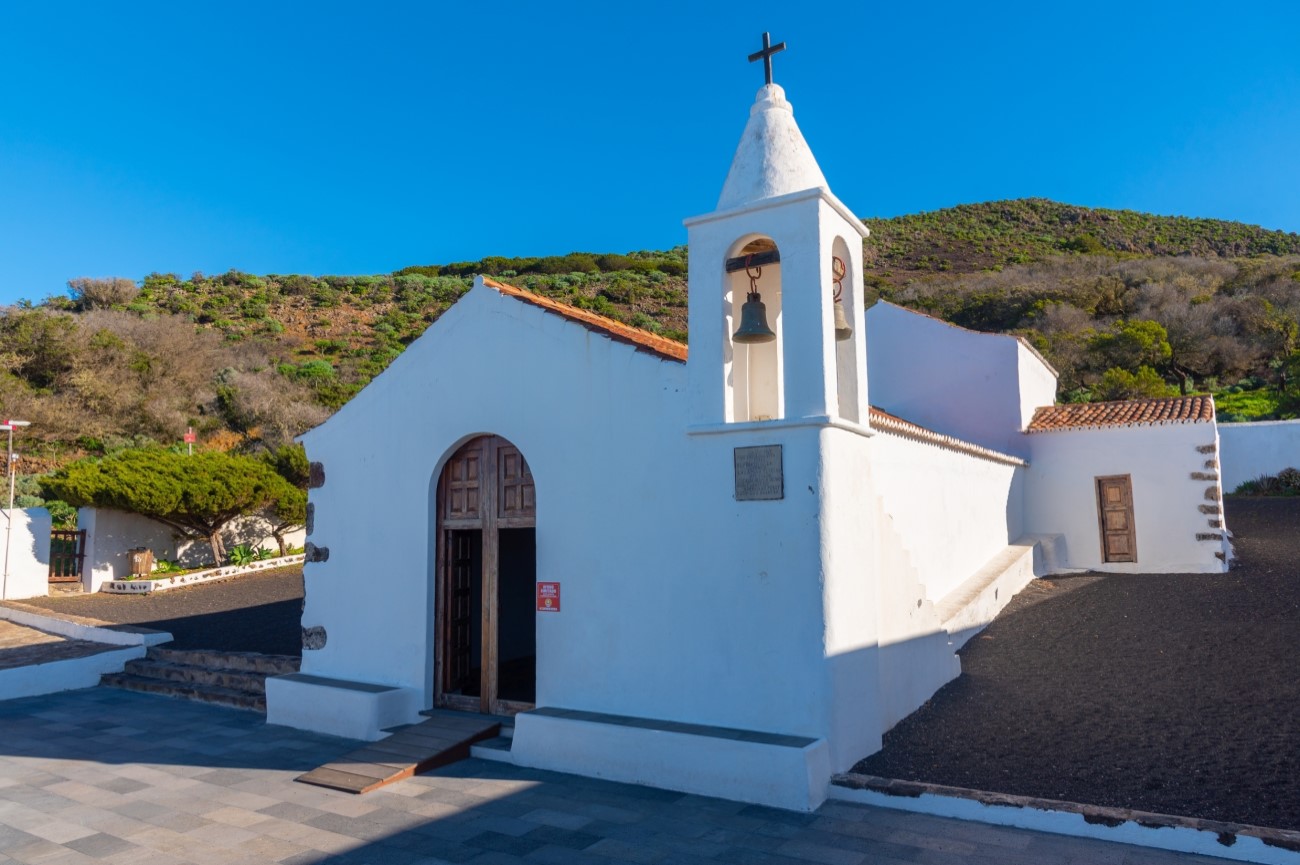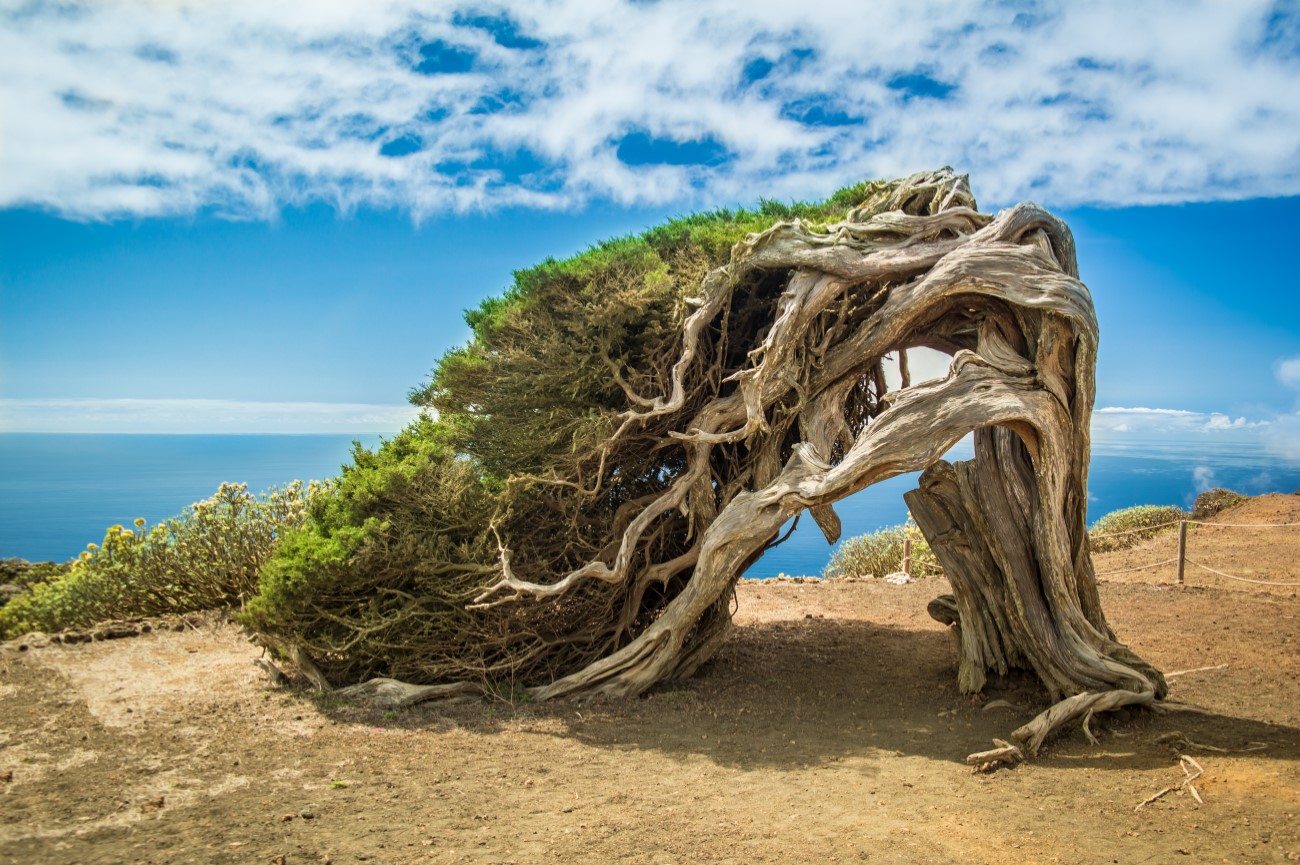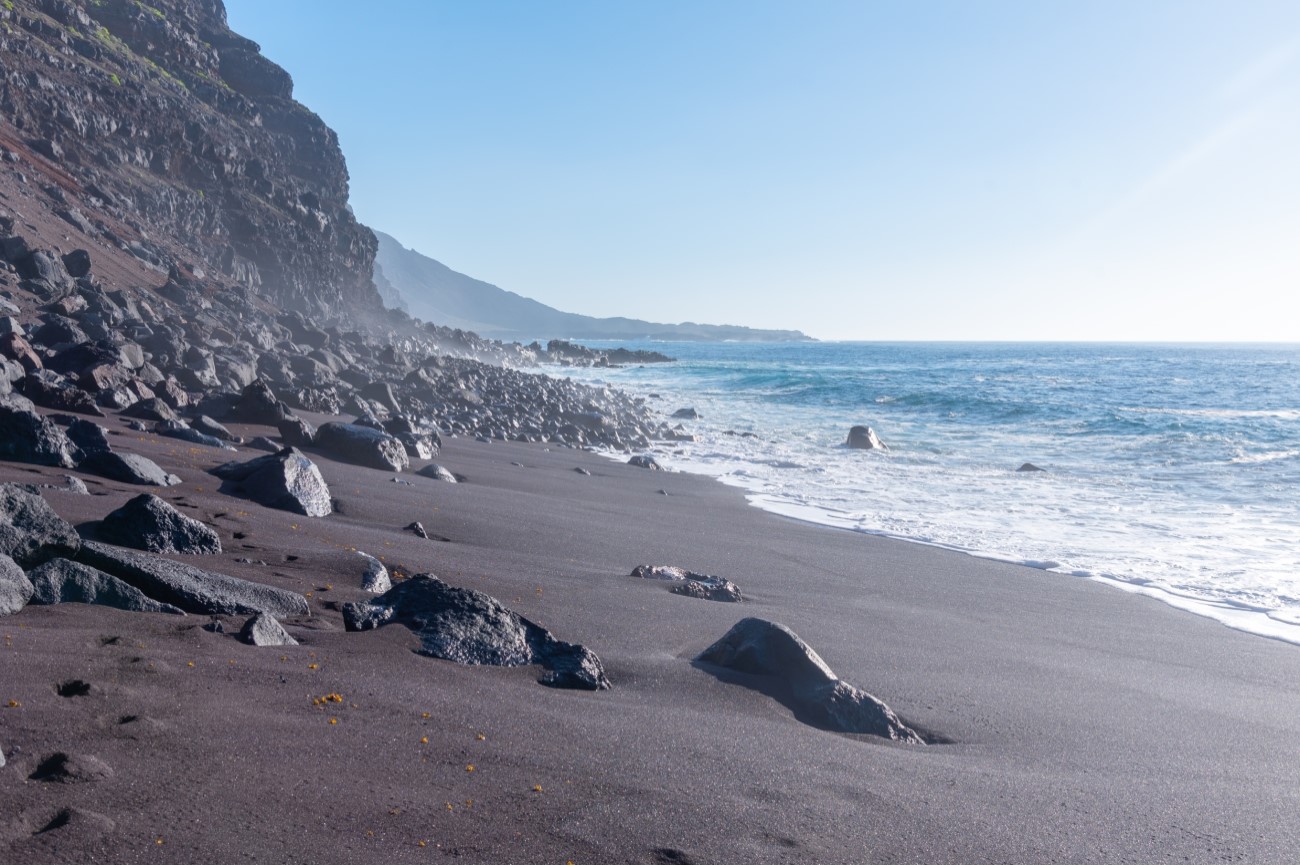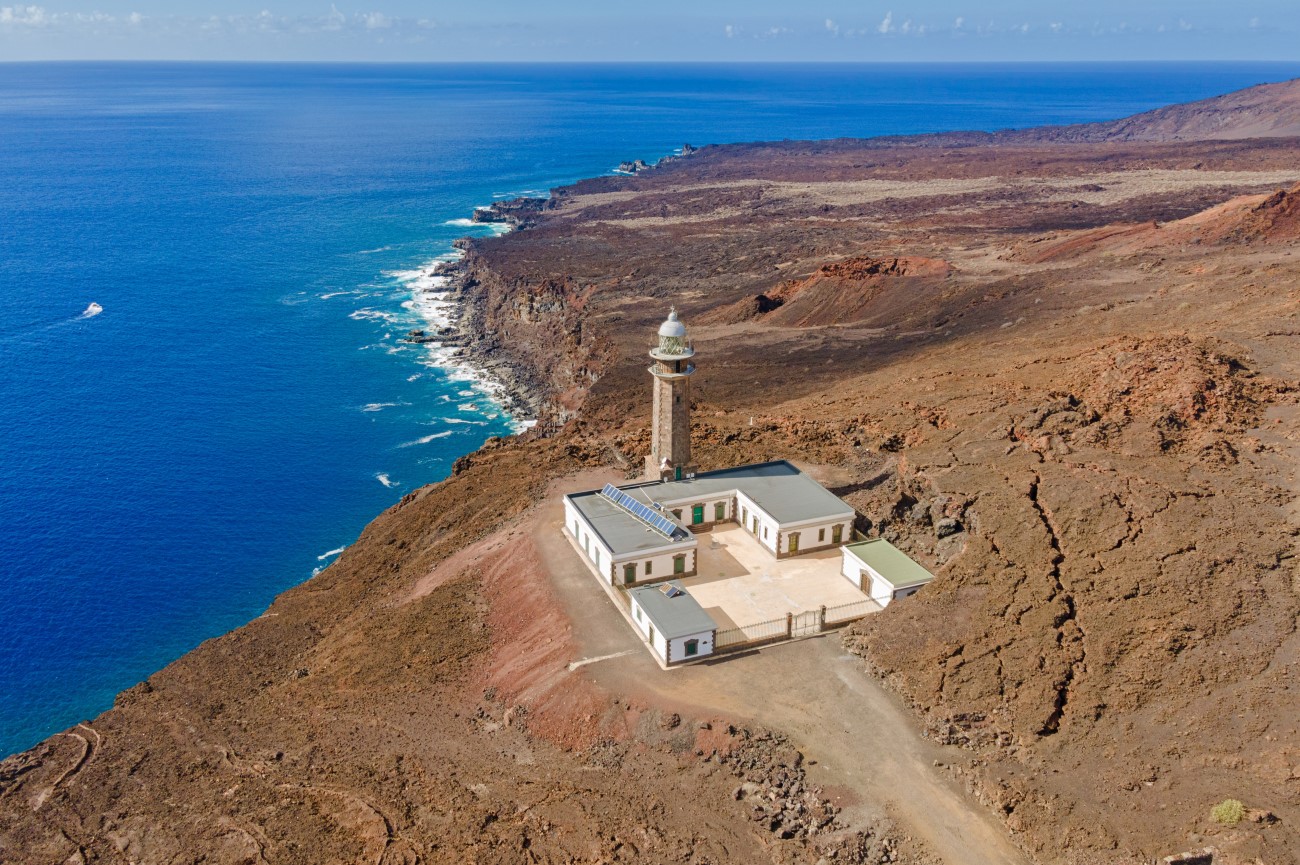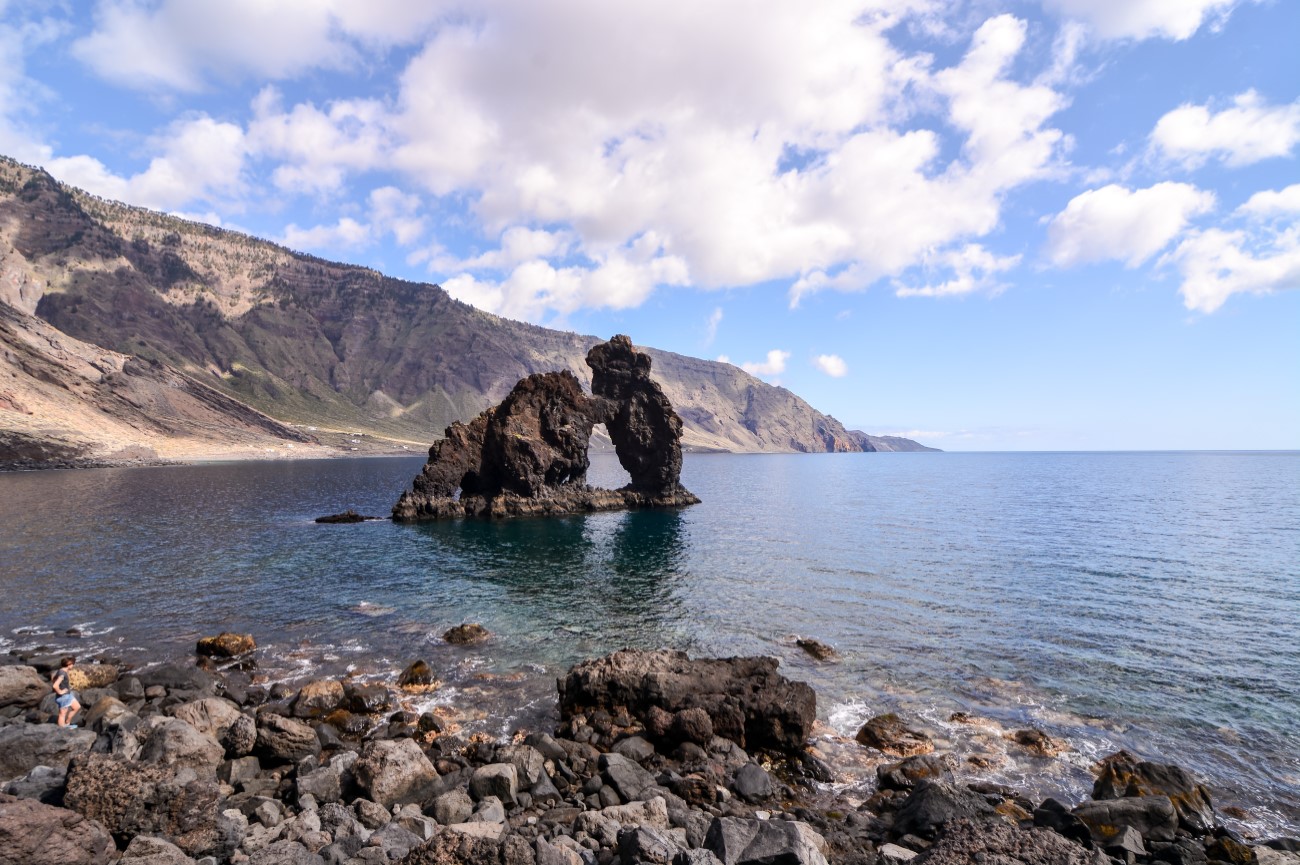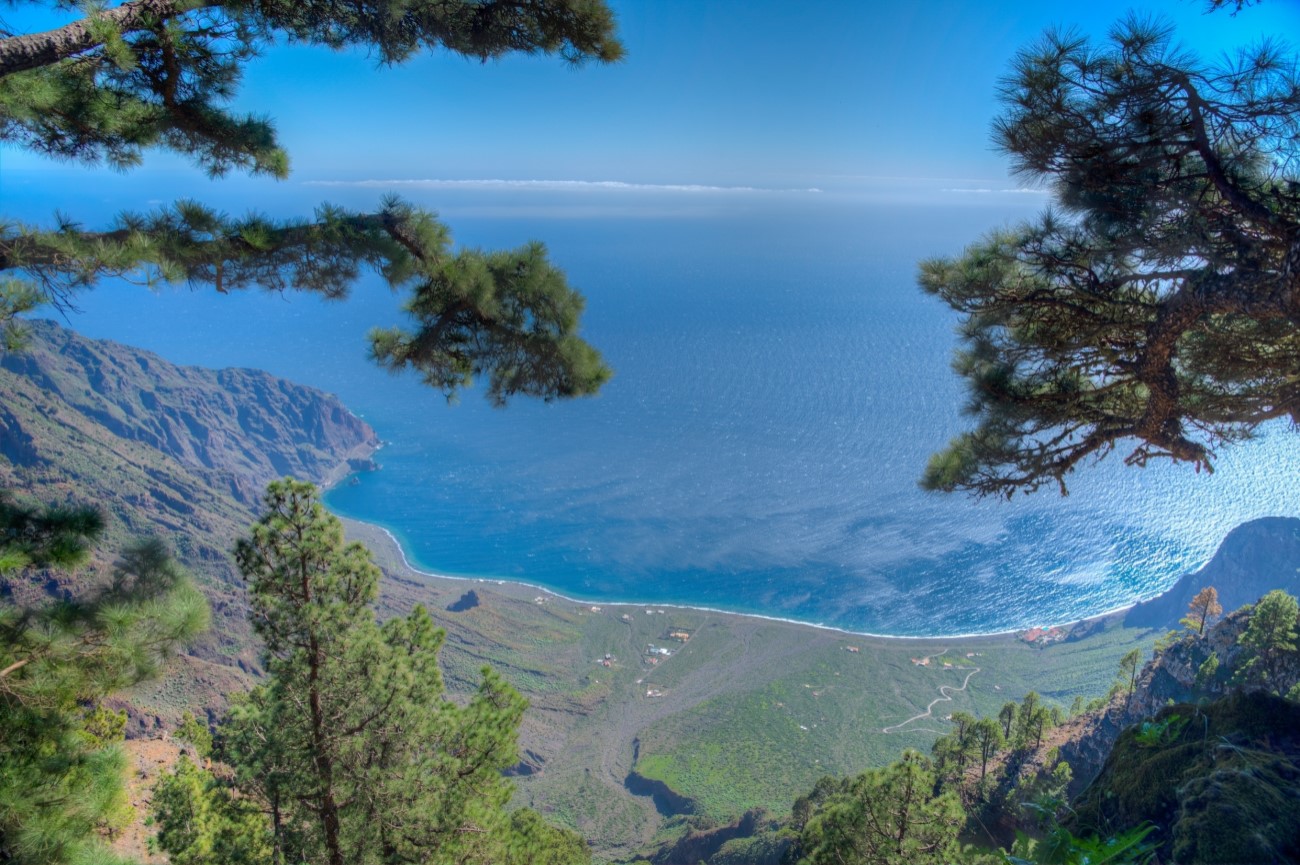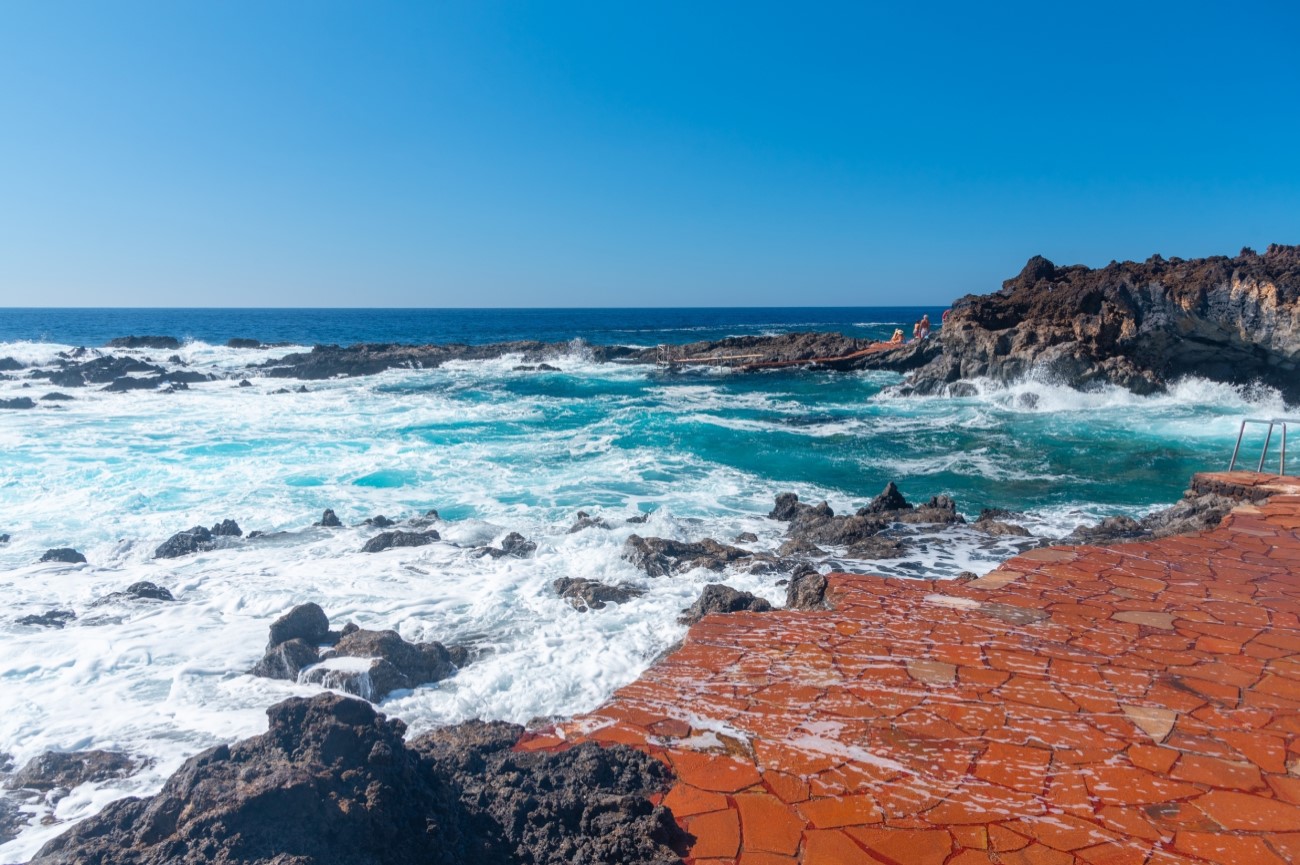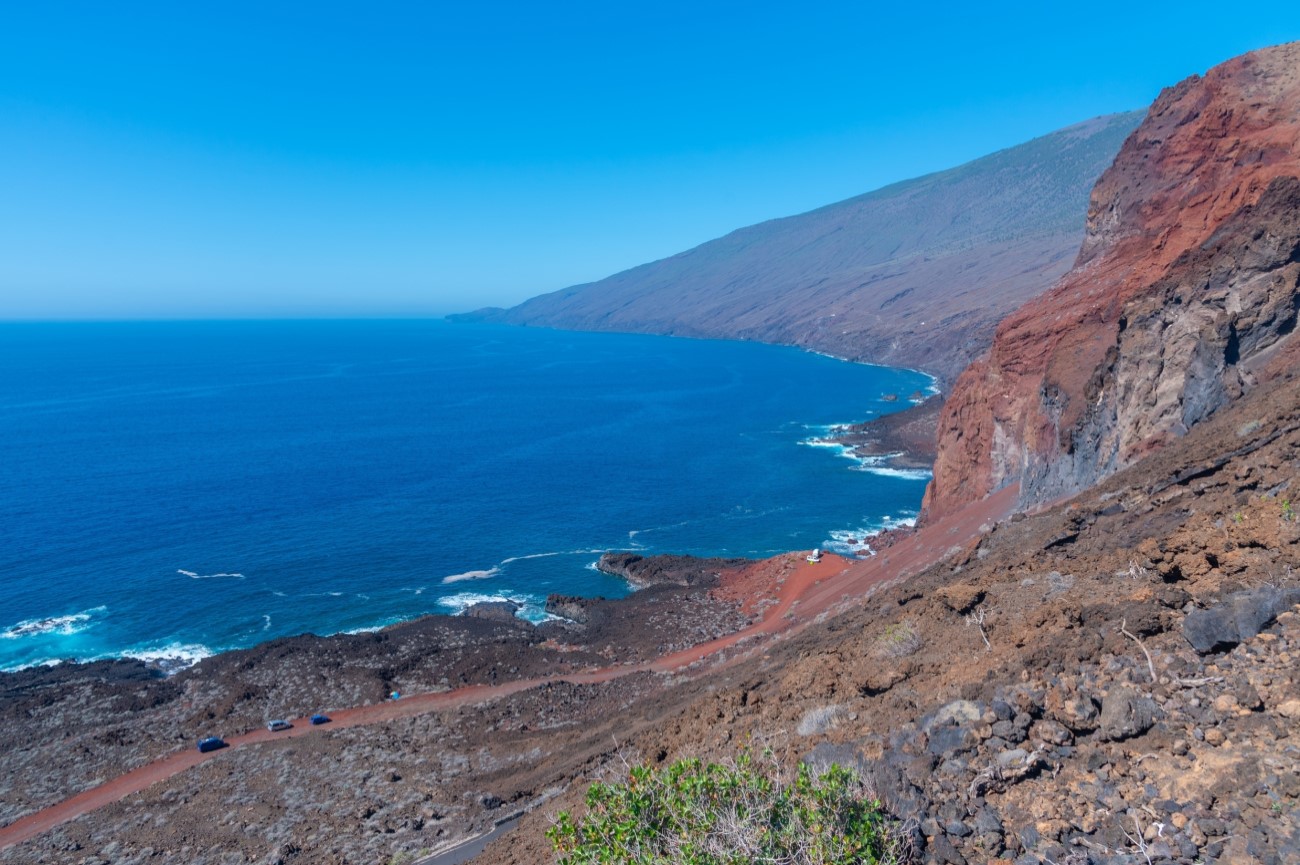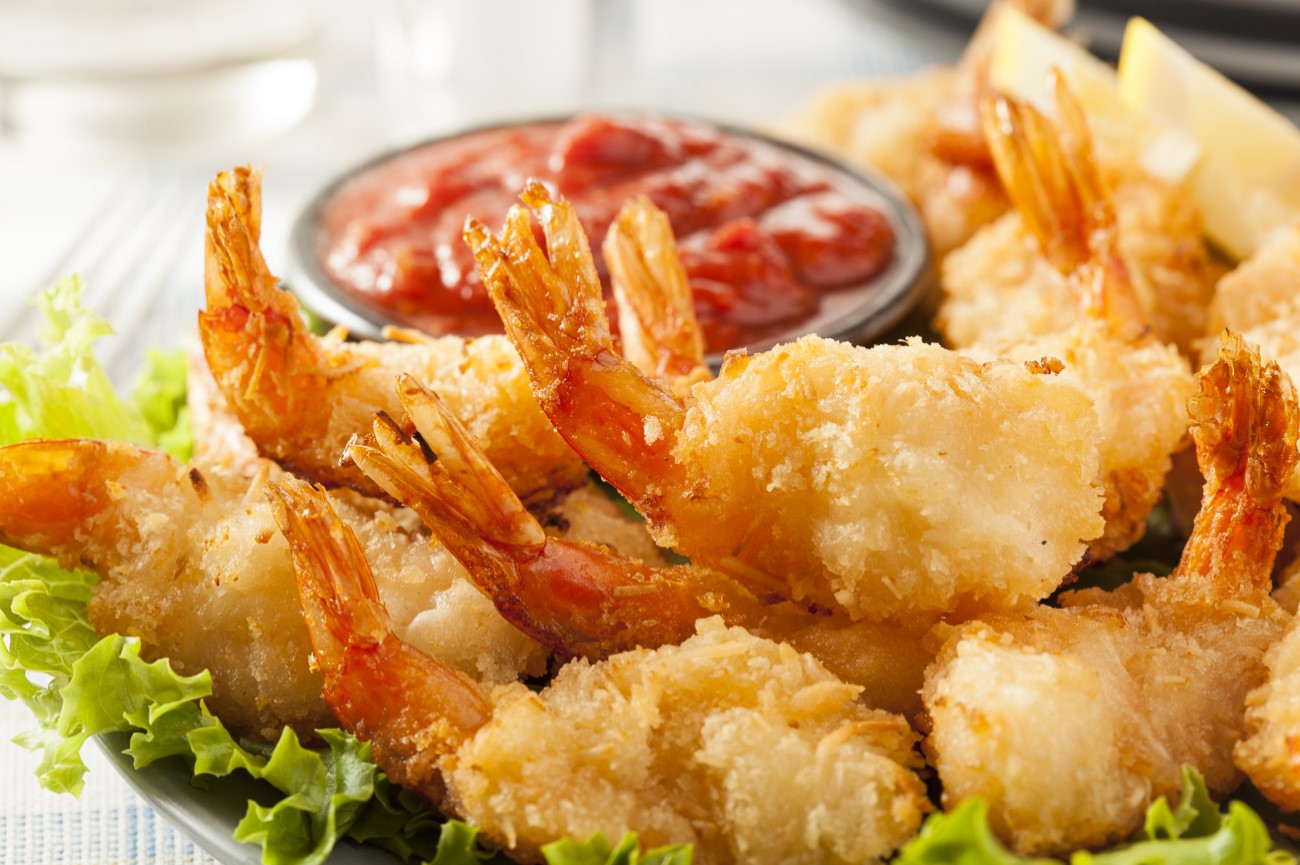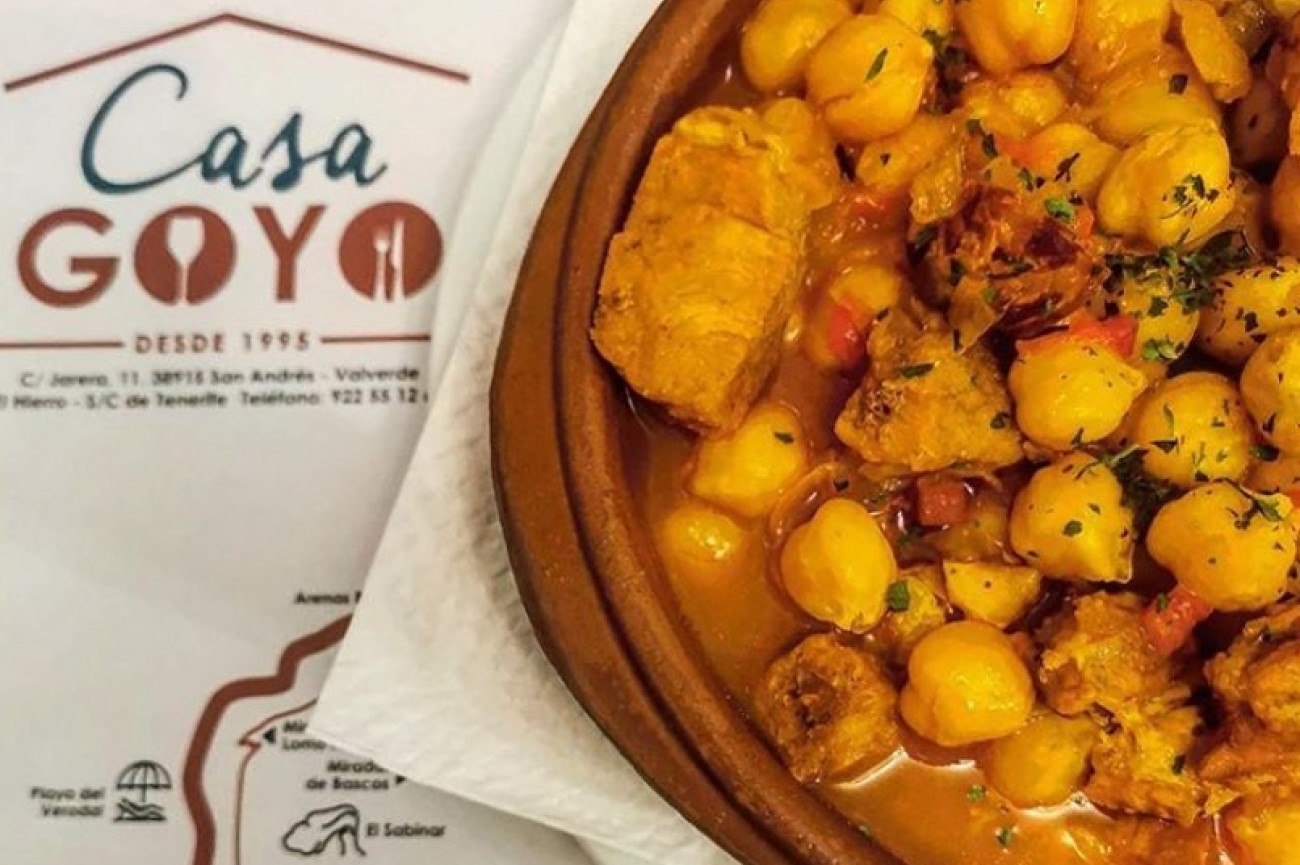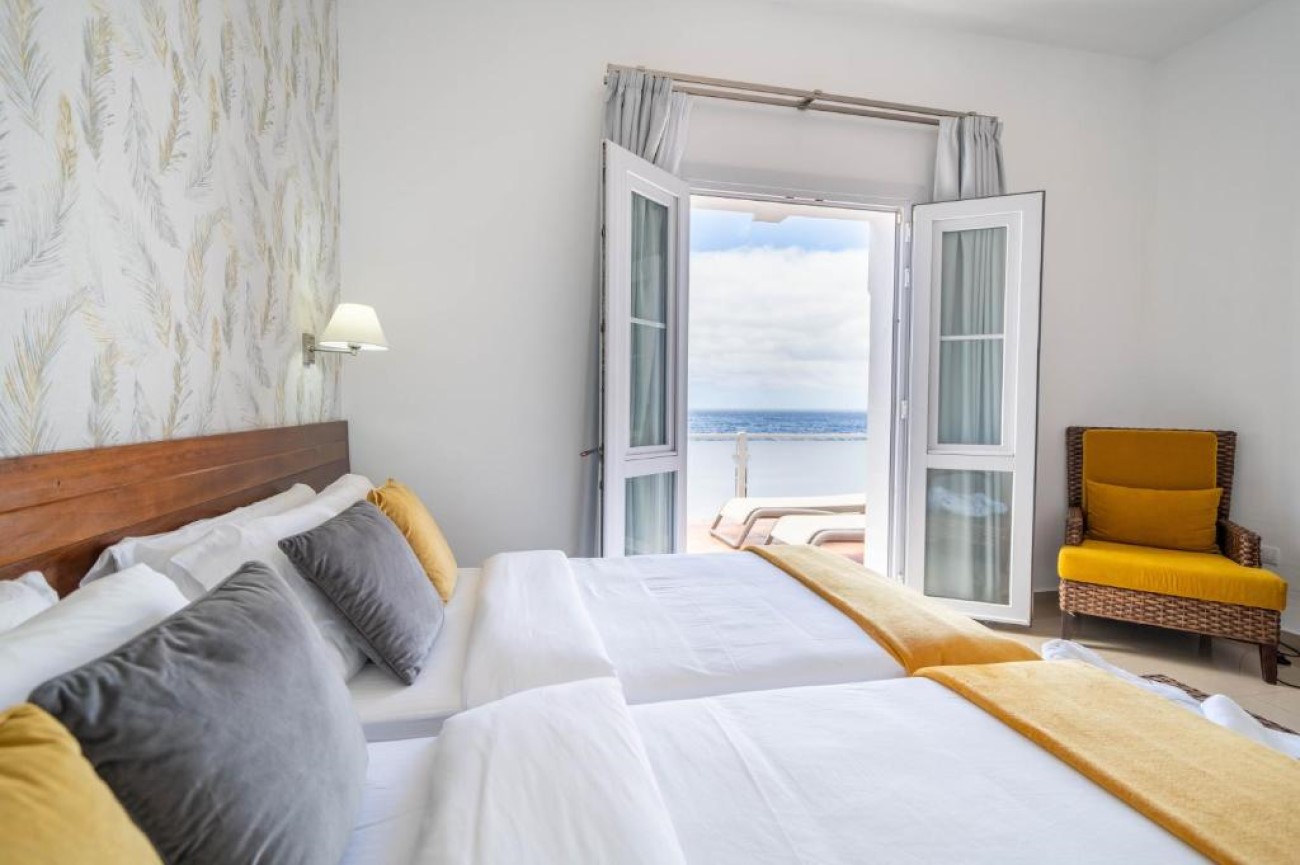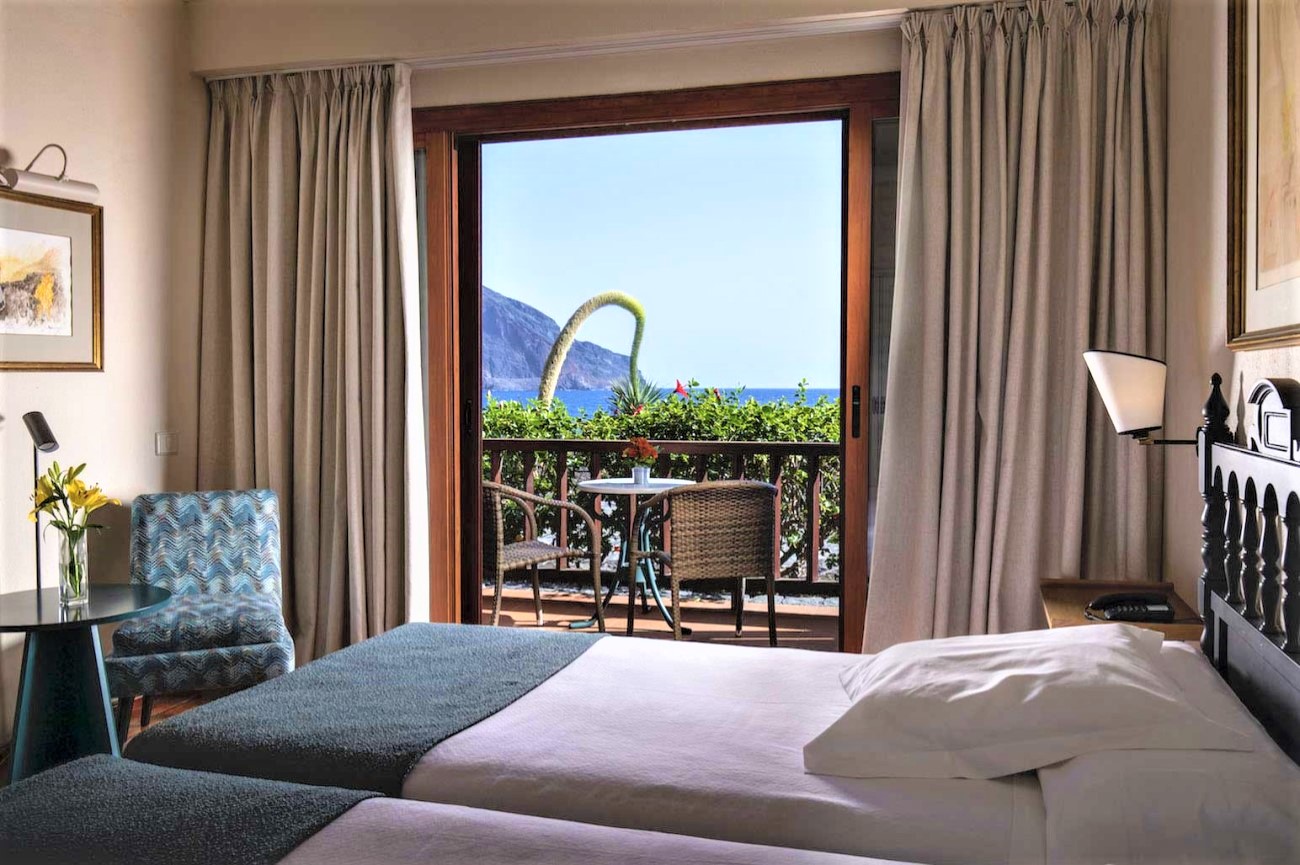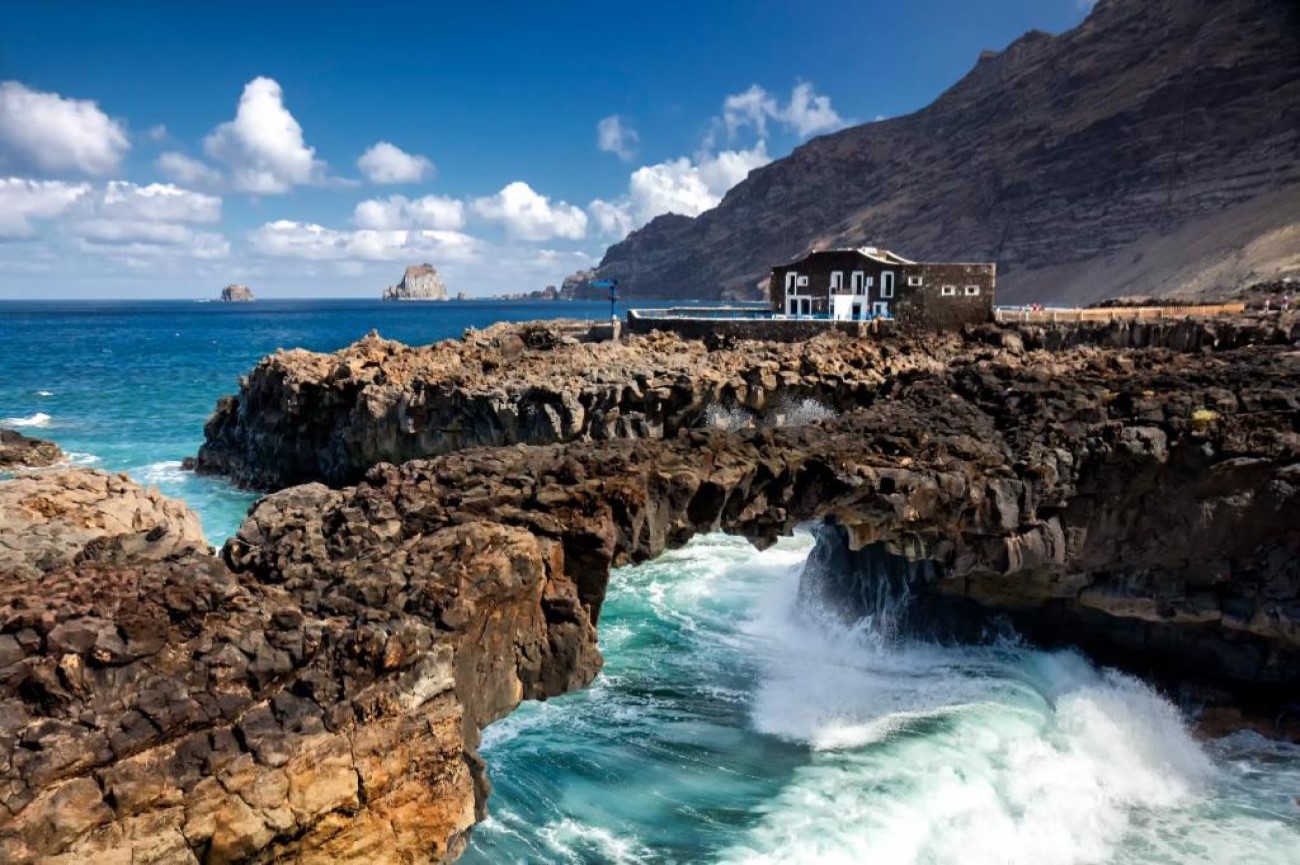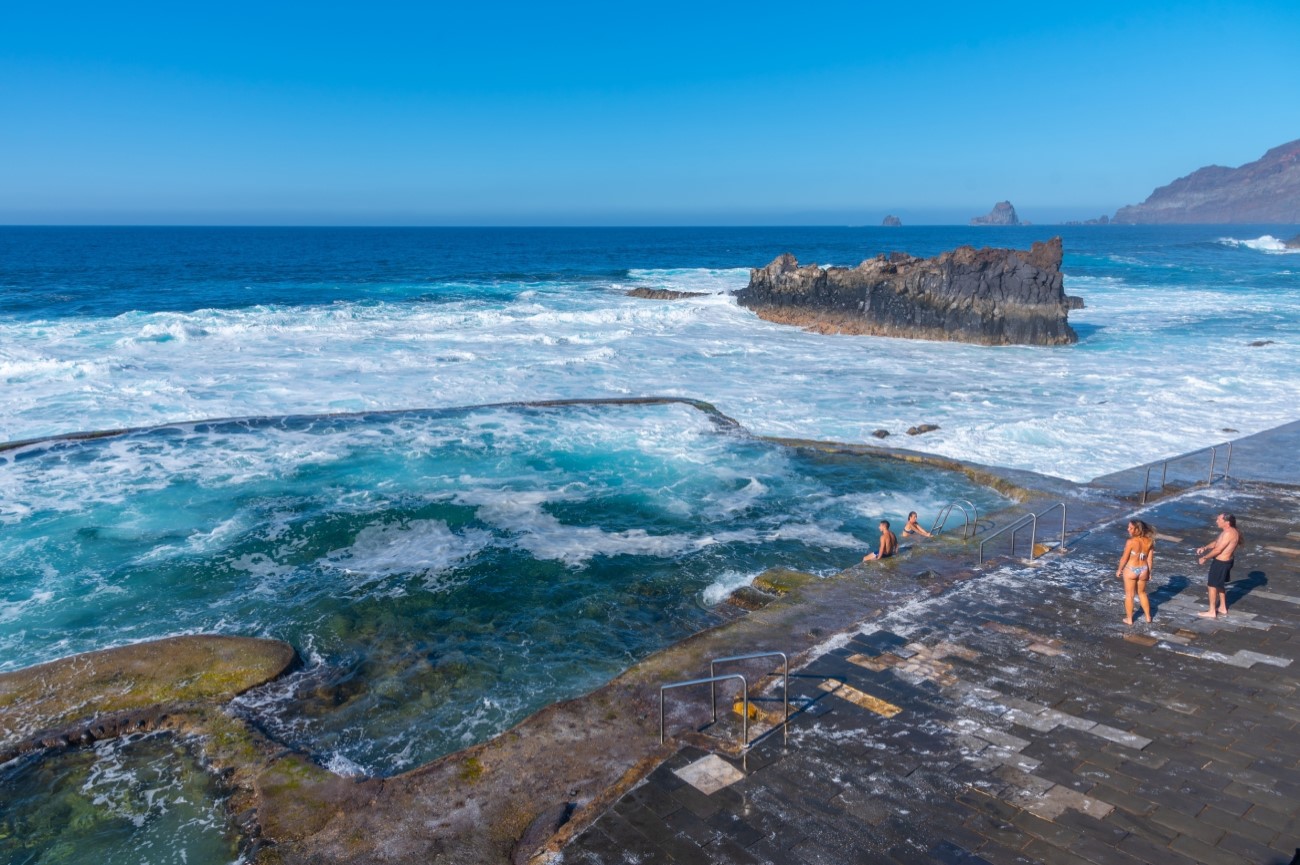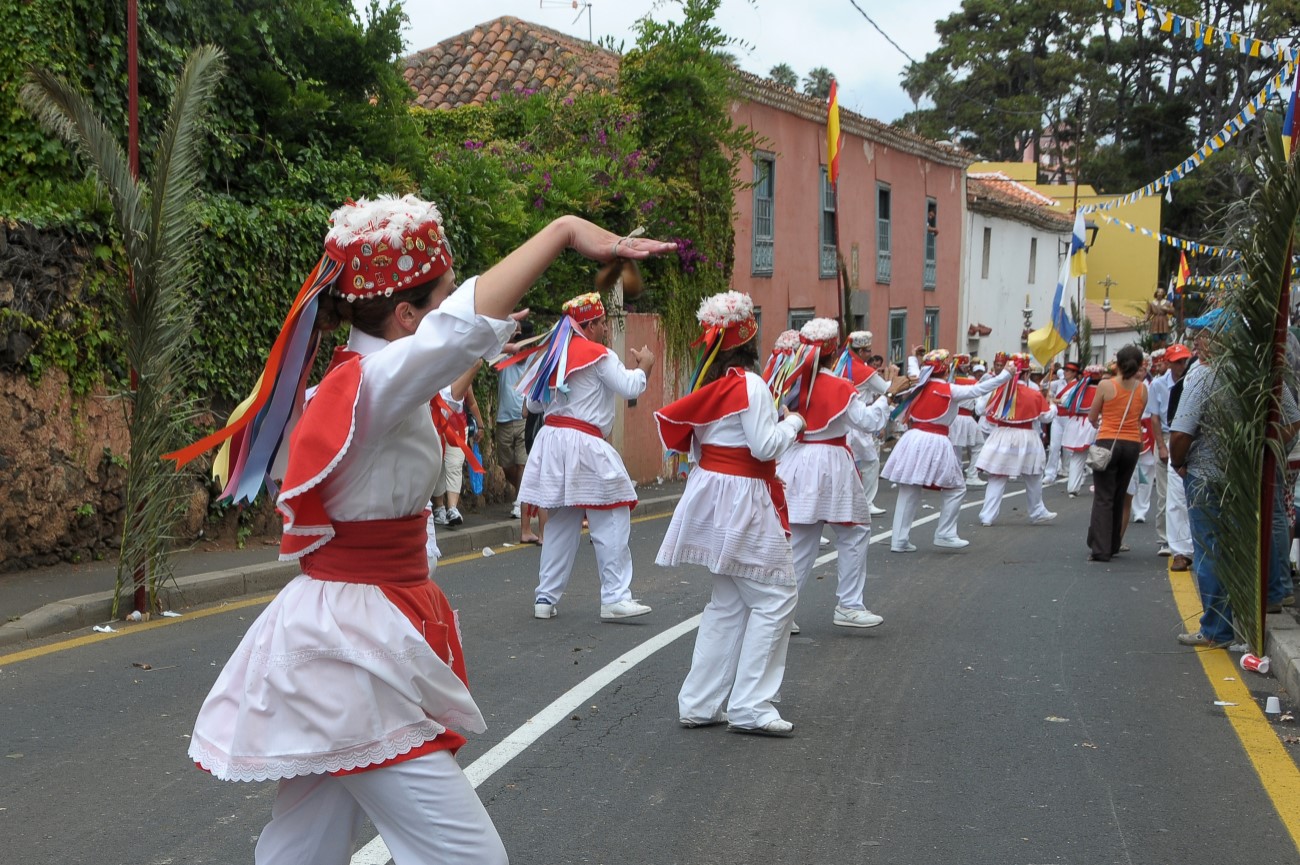Things to do in El Hierro, Spain - 3-day itinerary
El Hierro may be one of the smallest islands in the Canaries, but it is filled with remarkable attractions. Within its 280 square kilometres, you’ll find natural pools shaped by sea erosion, trails within pine forests and endless viewpoints where you can take it all in.
It is the ideal place to escape the crowds that flock to the more popular neighbouring islands of Tenerife and La Palma. Our three-day itinerary features the best things to do in El Hierro, including where to eat and stay while you’re in town.
Day 1 - East

Morning: Tamaduste
We’re spending our first day on the island exploring the east side. The first stop is Tamaduste, a coastal town set on the foot of a cliff. The main attraction here is the natural pool, one of the most picturesque spots on the island. After taking a dip in the crystal clear waters, head to the Mirador de Tamaduste to enjoy the panoramic views over the volcanic landscape. It’s a wonderful place to catch the sunrise if you can make it early enough. The town is pretty close to the local airport, making it a great starting point for your island tour.
Pozo de Las Calcosas
Drive west towards the village of Pozo de Las Calcosas. To reach it, you need to go down a steep trail. But even from above you can admire the traditional El Hierro houses, also known as pajeros. Originally built for fishermen, these structures stand out with their volcanic stone walls and thatched roofs. They are still owned by locals who head here in the summer to graze their livestock. Also down below are two natural pools if you fancy another swim. Keep your eyes out for the statue of the God of the Sea, Neptune, emerging amid the cliffs.
Mirador de La Peña
El Hierro is full of incredible viewpoints, but this is by far one of the best ones. Standing here, you can capture the El Golfo valley, the Roques de Salmor and the surrounding vineyards. It’s a popular spot for sunset as it faces straight west. The restaurant at the top of the cliff was designed by the Lanzarote-born architect César Manrique. It focuses on Canarian haute cuisine.
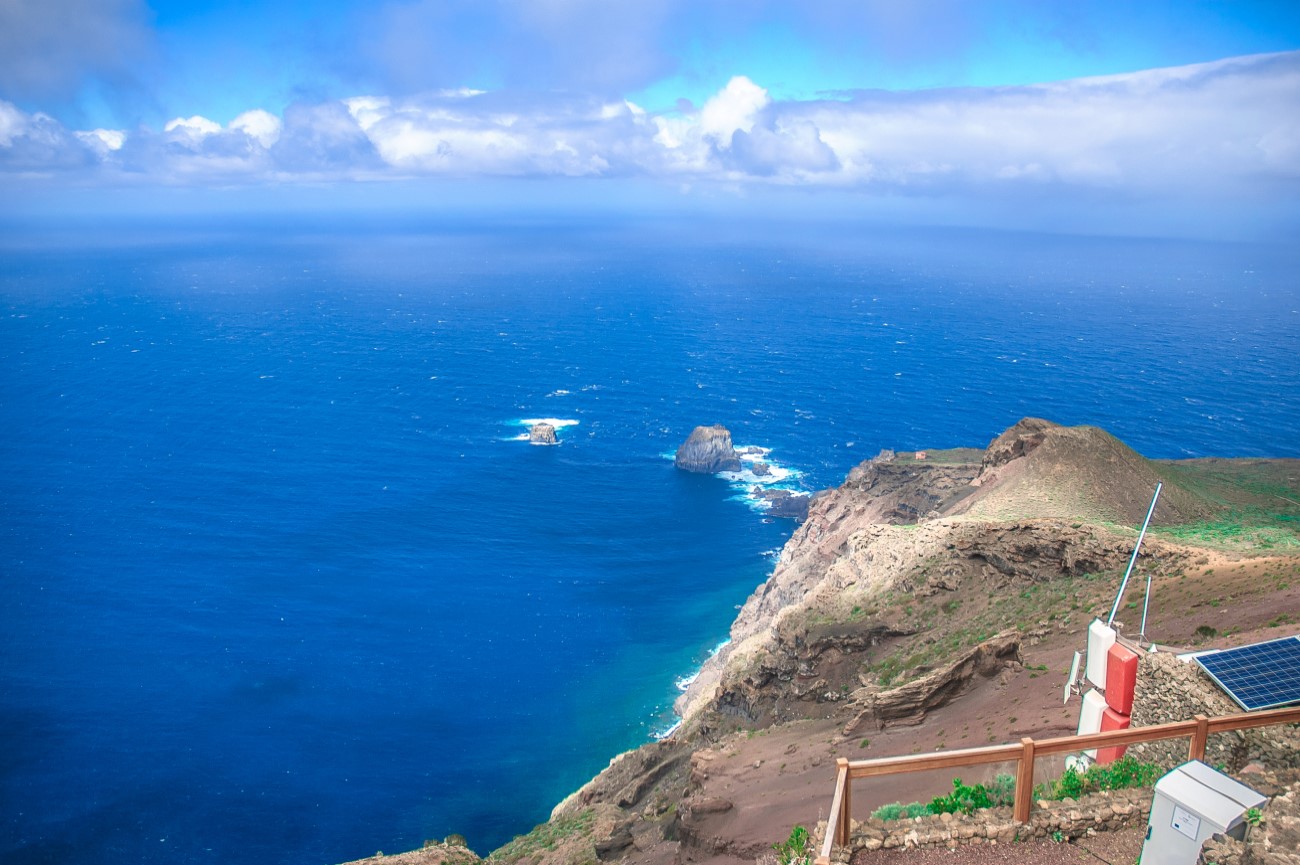 View of the Roques de Salmor from the viewpoint Mirador de la Peña, El Hierro, Canary Islands, Spain
View of the Roques de Salmor from the viewpoint Mirador de la Peña, El Hierro, Canary Islands, Spain
Ecomuseo de Guinea
After taking in the views, head to the Ecomuseu de Guinea. Inside this open-air museum are two attractions. The Casas de Guinea includes a volcanic cave and 20 traditional houses that cover life on the island through the centuries. Meanwhile, Lagartario is a sanctuary for the endangered El Hierro giant lizard. These iconic creatures can reproduce here before being released into nature. Guided visits are available in Spanish, English and German.
Afternoon: Charco Azul
Continue along the coast until you reach the Charco Azul. Part of the El Golfo valley, it is among the most famous natural pools in the Canary Islands. Its stunning turquoise waters contrast with the volcanic rock shaped by lava flows and the Atlantic waves. A staircase leads down to the waterfront with wooden mats in between for sunbathing.
Ermita de Nuestra Señora de Candelaria
Slowly make your way inland, stopping at La Frontera. It’s around here that you’ll find the Ermita de Nuestra Señora de Candelaria. This remote church dates back to the 19th century, but there has been a chapel here since the 17th century. Step inside to admire the stone columns and the ornate gilded altar, then climb up to the bell tower to capture the endless fields of banana plantations below.
Mirador de Jinama
Our last stop is the Mirador de Jinama, a 1230 metres-high viewpoint overlooking the El Golfo valley. Check the forecast beforehand to avoid getting caught in the clouds. If you’re lucky to get a clear day, you’ll be rewarded with a stunning sunset. The viewpoint gives you access to the Camino de Jinama, an 8km trail passing through several historical attractions, including the Iglesia de La Candelaria, Ermita de La Caridad and San Andrés. The path is pretty steep, so you need proper hiking gear to tackle it. It’s best to cover it early in the day as it takes about three hours to complete.
Day 1 - East El Hierro Tour Map
Day 2 - West

Morning: Sendero de La Llanía
Wake up early to take on the La Llanía trail. It’s an easy two-hour walk showcasing the contrasting scenery of the island. The 7km circular route starts in El Brezal and continues deep into a forest lined with ferns before reaching the Hoya de Fireba, a large volcanic crater. For the best panoramic views, you can continue up to the Mirador de La Llanía.
Santuario Nuestra Señora de los Reyes
Head west towards the Santuario Nuestra Señora de Los Reyes, a sanctuary dedicated to the island's patron saint. It was erected in 1577 to house the statue of the Virgin of Los Reyes. Every four years, this statue joins a procession around the island, known as the Bajada de la Virgen de Los Reyes. It also comes out during the Fiesta de Los Pastores, held in April every year. For this event, locals take the virgin to the Cueva del Caracol, where she was kept prior to the construction of the hermitage.
Afternoon: El Sabinar
From the sanctuary, follow the road towards El Sabinar. This enchanted forest is famous for its ancient junipers. The wind exposure over the years has twisted the trunks, making this an unusual scenery. So much so that it has become one of the most photographed spots on the island.
Playa del Verodal
Spend the rest of your afternoon exploring the west coast, stopping to visit the Playa del Verodal. The red ochre sand is a change of scenery from the rocky pools across El Hierro. The sea is a bit rough here, but it’s still worth coming for a shot of this remote beach framed by the enormous cliffs.
Faro de Orchilla
End your day at the Faro de Orchilla, one of the southernmost points of El Hierro. The volcanic landscape surrounding the lighthouse is the perfect background for a sunset shot. The lack of light pollution also makes it an ideal area for stargazing.
Day 2 - West El Hierro Tour Map
Day 3 - South

Morning: Las Playas
For our last day in El Hierro, we’re covering the south coast. The starting point is Las Playas Natural Monument, a 9km stretch backed by impressive cliffs. Standing here, you can spot the infamous Roque de la Bonanza, a 200-m rock that juts out of the sea.
Mirador de Las Playas
Make your way to the Mirador de Las Playas, passing through the village of Valverde and Las Casas. Once you reach the top, park your car and enjoy the breathtaking views of the beach and the pine forest below you.
La Restinga
From the viewpoint, head to the fishing port of La Restinga. In the morning, you can often see the fishermen arriving with their fresh catch. This side of the island is also a favourite spot for diving. The La Restinga Diving Centre can arrange scuba diving experiences on one of the 50 different dive sites across the island. During the trip, you’ll be able to explore tunnels and caves and spot several species, from manta rays and turtle sharks to stingrays and sea eagles.
Afternoon: Playa de Tacorón
After stuffing yourself with fresh fish in La Restinga, head northwest to the beautiful Playa de Tacorón. The clear waters here are ideal for snorkelling. You can also find a lovely picnic area and natural pools nearby.
Mirador de Tacorón
A few steps from the beach is the Mirador de Tacorón. This viewpoint is the perfect place to catch your last sunset and bid farewell to the island.
Day 3 - South El Hierro Tour Map
Top things to do with kids in El Hierro
El Hierro offers plenty of options for a family holiday. You can head for a swim at the natural pools, which usually include shaded areas and a restaurant where you can stop for a snack. There are also a few sandy beaches, but they often have fewer amenities. Younger kids can enjoy the playgrounds in La Restinga or the Hoya del Morcillo recreation area. Other noteworthy attractions include El Julán, where you can learn about the ancient people of the island, and the Centro de Interpretación Vulcanológico (Centro de Interpretación del Geoparque), which offers an interactive experience on vulcanos.
Where to eat in El Hierro
El Hierro offers a simple cuisine focused on locally-sourced ingredients like fresh fish and seafood. Other specialities include papas arrugadas (wrinkled potatoes topped with mojo picón sauce), gofio escaldado (mashed cereal) and the caldo de queso (cheese soup). You can also sample cheese in the El Hierro quesadilla, a sweet pastry made with cheese, lemon, cinnamon, sugar and aniseed. All of these can be paired with a glass of local wine. Below are some of the best places to eat in El Hierro:
- La Tafeña: You’ll find this lively restaurant in the island's capital, Valverde. The menu offers a mix of regional and international dishes. Favourite options include the octopus tempura and the milhojas de berenjena (eggplant mille-feuille).
- El Refugio: Set in La Restinga, El Refugio is a family-run restaurant which has been open since 1988. It’s one of the best spots to sample fresh fish and seafood on the island. Try the shrimp and the limpets, or ask for the catch of the day.
- Casa Goyo: This no-frills restaurant serves a delicious selection of tapas at an affordable price. Order the stuffed chicken breast, and don’t miss the tres leches cake for dessert.
Where to stay in El Hierro
- Hotel Balneario Pozo la Salud (3 stars): Set on the edge of the cliff, this hotel offers privileged views of the sea. You can take advantage of the landscape from your room or the outdoor terrace. There is also a swimming pool, playground, restaurant, and spa where you can unwind at the end of the day.
- Parador de El Hierro (3 stars): This three-star hotel sits between the mountains and the ocean near the Las Playas natural monument. Guests can swim in the hotel’s pool or the nearby black sandy beach. The restaurant on-site serves traditional dishes like the papas arrugadas and the quesadilla.
- Hotel Restaurante Puntagrande (2 stars): Puntagrande is one of the smallest hotels in the world. There are only five rooms here, making it ideal for those looking for a bit of privacy amid the ocean. It’s also a prime spot for stargazing.
Best time to visit El Hierro
El Hierro offers a pleasant climate all-year round, which means there is hardly a bad time to visit. The coldest month is January, with an average temperature of 21ºC, and the hottest is August, at 29ºC. A cold current hits the island in the summer, making it cooler than in most southern European countries. There is little rain in winter, so you can still make the most of the island’s trails.
El Hierro Festivals
- Bajada de la Virgen de Los Reyes: The Bajada de la Virgen de Los Reyes is a beautiful festival that occurs on the first Saturday of July every four years. During this festival, the islanders carry the patron saint of El Hierro, ‘Our Lady of the Kings’, from her shrine in Santuario Nuestra Señora de Los Reyes to the capital Valverde. It’s a 28km-procession with locals sporting white clothes and coloured hats while dancing to the beat of the drums.


